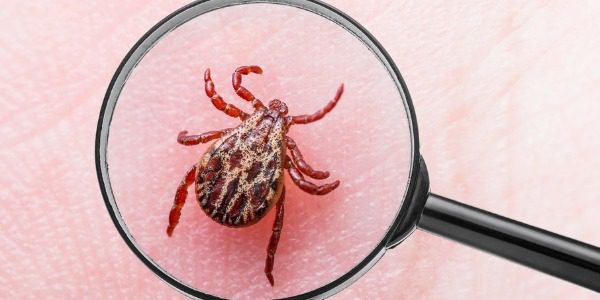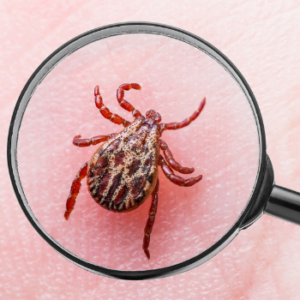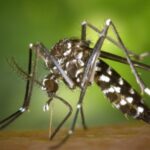
What is Lyme Disease?
With more than 200,000 cases in the United States each year, Lyme Disease is the most common vector-borne disease in the country. To make matters worse, Lyme Disease is transmitted through an all-too-common pest on Long Island: ticks. Read on to learn how Lyme is contracted, the signs of the disease, and what you can do to prevent your family from getting it.
How Do You Get Lyme Disease? 
Lyme Disease is an infectious disease, and it’s caused by a specific bacteria, the Borrelia bacterium, which is spread by ticks; in particular, Lyme is transmitted to humans by the bites of infected ticks of the genus Ixodes.
Because ticks don’t fly or jump, instead, they hang out in areas like tall grass or bushes, resting on the tips of the foliage waiting for a host. This is called “questing.” When they’re questing, ticks hold onto the foliage by their lower legs, and outstretch their upper legs, waiting to jump aboard a passing host. When a host brushes the spot where the tick is waiting, it will quickly jump onto them, then seek out a desirable place on the host’s body to bite.
Ticks can and will attach themselves to any part of the human body but are generally found in harder-to-see areas, including the groin, armpits, and scalp. These ticks must be attached to their host for at least 36-48 hours before the bacteria can be transmitted.
Typically, humans are infected by the bites of nymphs, which are immature ticks that feed during the spring and summer. Adult ticks can also transmit Lyme Disease, but they’re usually much easier to spot on the body because they’re significantly larger than nymphs!
What Are the Signs of Lyme Disease?
There’s a wide range of symptoms for Lyme Disease, and warning signs vary depending on the stage. Here’s a breakdown, as reported by the CDC.
Early Signs and Symptoms (3 to 30 days after the tick bite):
- Fever, chills, headache, fatigue, muscle and joint aches, and swollen lymph nodes
- Erythema migrans (EM) rash
Later Signs and Symptoms (days to months after the tick bite):
- Severe headaches and neck stiffness
- Additional EM rashes on other areas of the body
- Loss of muscle tone or drooping on one or both sides of the face, known as Facial palsy
- Arthritis
- Intermittent pain in tendons, muscles, joints, and bones
- Heart palpitations or an irregular heartbeat
- Dizzy episodes or shortness of breath
- Inflammation of the brain and spinal cord
- Nerve pain
- Shooting pains, numbness, or tingling in the hands or feet
Because untreated Lyme Disease can become so severe, prevention and early detection are key. It’s recommended to undergo a two-step blood testing process if you suspect you may have Lyme. If the first step is negative, no further testing is recommended; if the first step is positive or indeterminate, the CDC recommends a second step. If the first test is positive and the second test is positive, the overall result is positive, too.
Can Dogs Get Lyme Disease?
If your dog loves rolling around in the grass and exploring the outdoors, picking up the occasional tick, you may be wondering if it’s possible for your pup to contract Lyme Disease. Unfortunately, dogs, too are susceptible, and experience an array of physical ailments, such as joint pain, swelling, and fever, if contracted. It’s always recommended that you speak with a veterinarian about tick control products to help protect your dog, in addition to regular tick treatments for your yard from a licensed pest control company.
How Can You Prevent Lyme Disease?
There are several ways you can reduce your risk of tick bites:
- Wear long clothing.
- Avoid wooded areas.
- Tuck your pants into your socks.
- Check yourself, your kids, and your pets for ticks when you come indoors.
- Wear lighter-colored clothing.
- Keep your hair covered and pulled back.
- Shower immediately after hanging out near trees or high grass.
Ultimately, preventing ticks from infesting areas near your home comes down to one simple solution—making your property unsuitable for ticks! There are many things you can do to prevent or eliminate ticks from your property but, to truly ensure your family, pets, and home are safe, your best bet is to have a professional implement an effective solution.
Call or text (631/516) 864-6900 for your free tick inspection.





